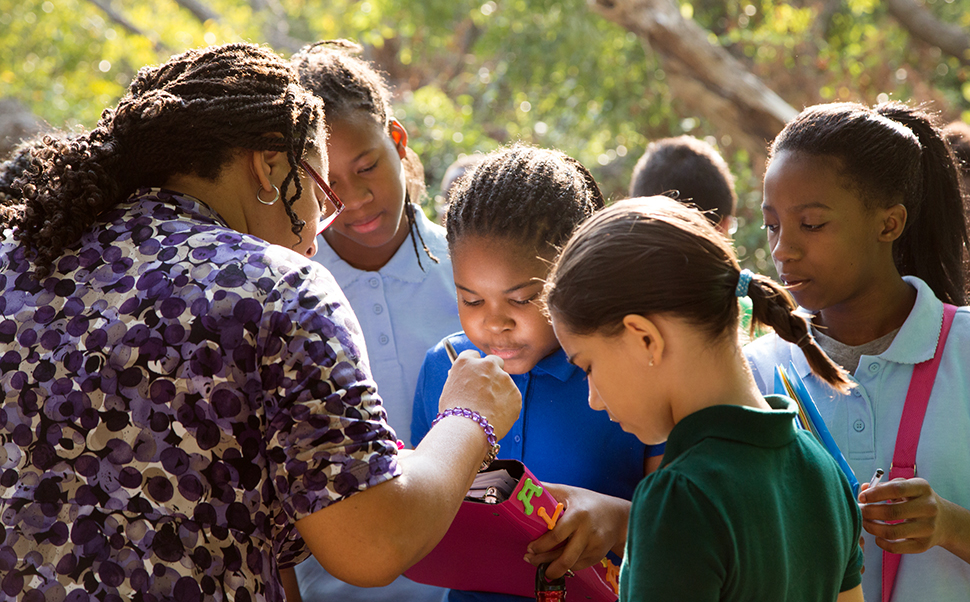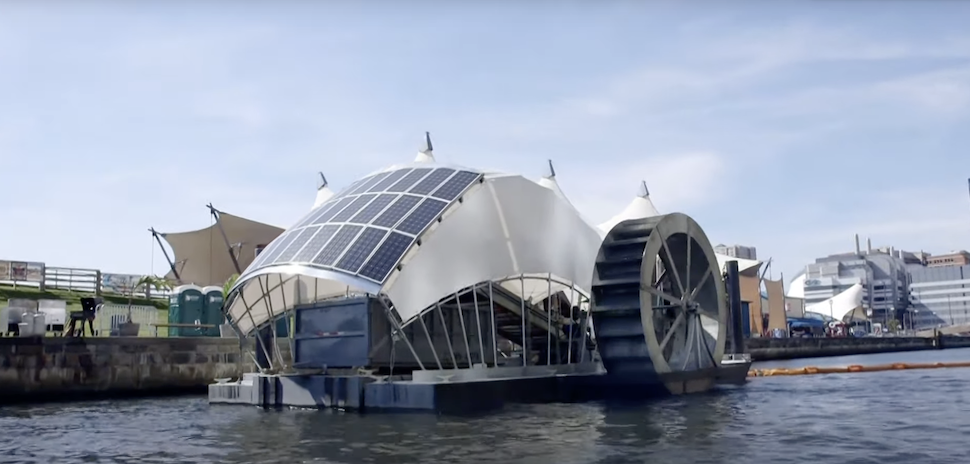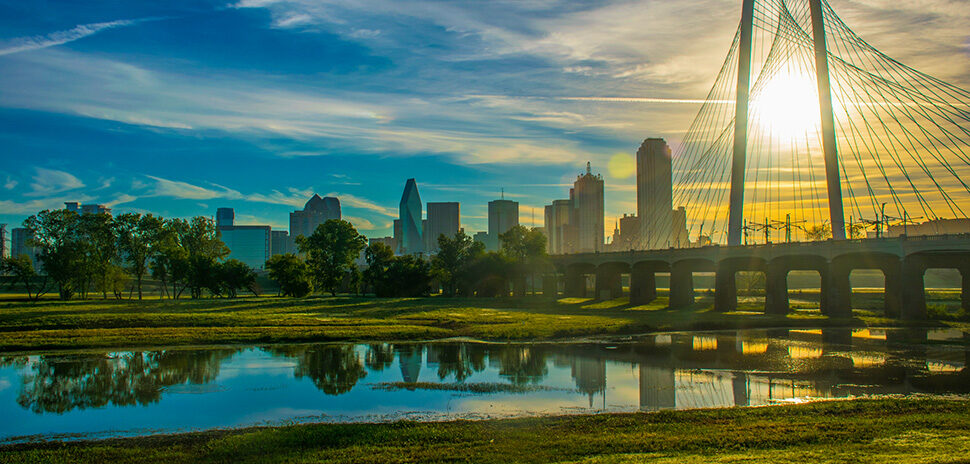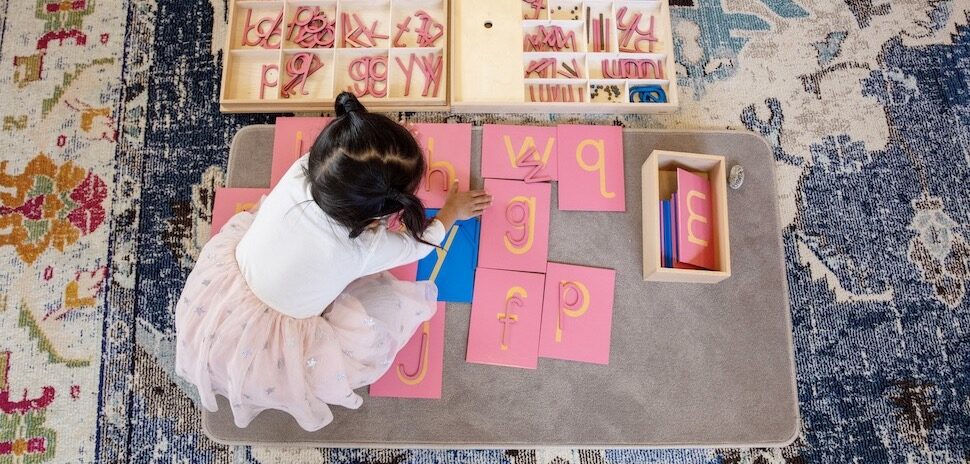Trinity Environmental Academy in South Dallas offers a unique educational experience for youngsters by taking them into, teaching them about, and connecting them with the natural world.
It’s the creation of a group of science teachers and experienced educators, who, about four years ago, formed a nonprofit called Sustainable Education Solutions. Their goal was to establish a Dallas charter school that would combat the often-mentioned disconnect between kids and the environment.
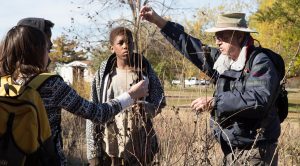
Students from Trinity Environmental Academy learning in the field with an instructor. Courtesy Trinity Environmental Academy.
Nature would become a living lab, and students would learn through the lens of the world around them. They’d reconnect with nature, learn its importance, and reap the physical and educational benefits of environmental learning.
In 2014, the teachers were granted their Generation 19 charter, and in 2015, Trinity Environmental Academy (TriEA) began enrollment for the 2015-16 school year. Currently, the academy services only kindergarten, first, and sixth grades (about 145 attending scholars), but there are plans to build it into a pre-K through 12th-grade school in the coming years.
Trinity Environmental Academy meets state standards through a unique and innovative curriculum that incorporates the environment into a broad range of subjects. Despite a science and engineering focus, the academy connects other subjects to the environment — nature provides endless opportunities for young children to learn about counting and shapes, and the environment plays huge roles in history and literature.
This curriculum is guided, in part, by two books: Education and the Environment: Creating Standards-Based Programs in Schools and Districts by Gerald A. Lieberman, which serves as a guide for environmental-based learning, and Last Child in the Woods: Saving Our Children from Nature-Deficit Disorder by Richard Louv, which details the widening gap between kids and nature.
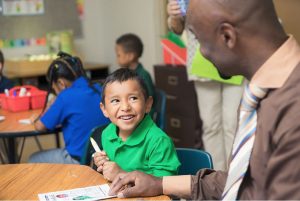
A student gets some one-on-one time with an instructor. Courtesy Trinity Environmental Academy.
“These books give a research basis as to why teaching through the lens of nature is a benefit to children and increases their ability to retain and move through material faster,” says Michael Hooten, founder and superintendent of Trinity Environmental Academy. “The environment is so wide and so deep that you can teach in almost any context and any subject.”
The academy’s vision, in part, is to “improve the environmental literacy of Dallas families — particularly its youngest scholars.”
Trinity Environmental Academy is situated in south Dallas, where it aims to acquaint children who might not otherwise have a chance with the environment.
“In these low socioeconomic areas, parents tell me, ‘I don’t let my kids play outside,’” Hooten said. “Our mission is to be outside and to teach through the environment. Our mission is to go hiking and camping and get kids canoeing on the Trinity River. We want them to experience the environment through learning opportunities.”
By teaching kids about the environment and related sustainability practices like gardening, composting, and low-energy use, the hope is that parents will become acquainted with these ideas, too. South Dallas is a food desert, and Hooten believes that creating new habits (i.e., learning how to grow vegetables and herbs) will help improve people’s access to fresh food.
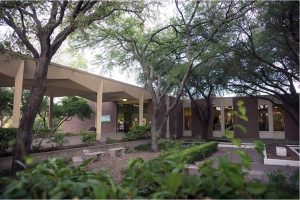
The front garden at Trinity Environmental Academy. Courtesy Trinity Environmental Academy.
One of Trinity Environmental Academy’s biggest advantages is its partnership with Paul Quinn College, located on the edge of the Trinity Forest.
The agriculture program at Paul Quinn allows TriEA scholars to witness livestock care, planting and harvesting, and tilapia farming firsthand. Paul Quinn has also recently leased the academy its 50,000 square foot science building.
Currently, TriEA is the only public school in Texas aligned with (and held at) a private college — and the only environmental charter school in the state. As the program grows, Hooten has high hopes for his school, the children attending, and ultimately, the environment.
“If we continue on the same path we are now, people will build themselves out of nature,” Hooten says. “We’re teaching our scholars to think about what it is that you can do with your resources and how you can be a better steward to the environment, knowing that this is all we have.”
For a daily dose of what’s new, now, and next in Dallas-Fort Worth innovation, subscribe to our Dallas Innovates e-newsletter.

